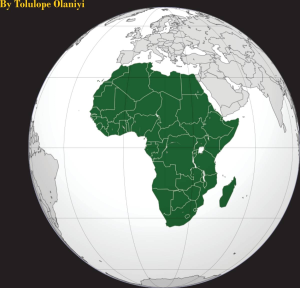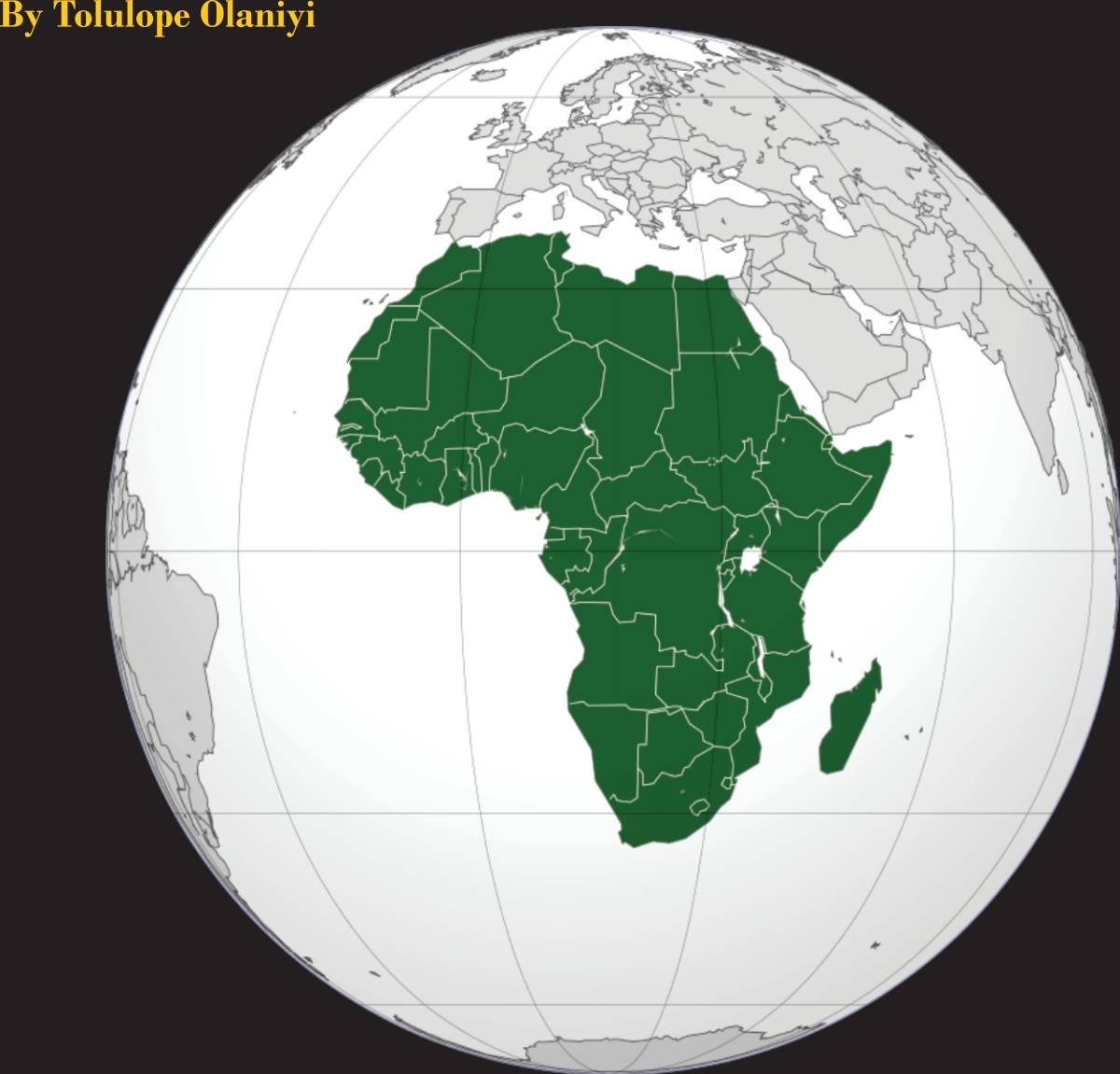By Tolulope Olaniyi
Before discussing the state of and trends in development and green growth in Africa, it is worth noting that Africa is the world’s second-largest continent, consisting of 54 independent nations with vastly different climates and ecosystems, human geographies, and economies. Africa is roughly the size of the United States, China, India, Japan, and Europe combined.
According to The Economist, Africa has the highest rate of population growth of any continent, at 2.7% per year, and the continent’s population is expected to reach 2.2 billion by 2050.
Furthermore, Africa is home to a significant portion of the world’s natural resources, both renewable and non-renewable, with natural capital accounting for 30-50% of total wealth on the continent. It is also estimated that over 70% of people in Sub- Saharan Africa rely on forests and woodlands for a living.
However, many of these resources are used in an unsustainable manner, while others are lost due to illegal activities. The question of whether Africa should prioritize economic growth over environmental sustainability is frequently raised. There are concerns that adopting a green growth model will have a negative impact on economic growth on the continent, as some green growth policies and technologies are thought to be less productive or more expensive to implement than traditional practices.
The African Development Bank and the Global Green Growth Institute (GGGI) released a report analyzing the readiness of seven countries to drive green growth: Morocco, Tunisia, Kenya, Rwanda, Senegal, Gabon, and Mozambique.
READ MORE: Fight Against Apartheid: How Queen Elizabeth Supported Africa against Thatcher — Prof. Akinyemi
GGGI was established with the mission of promoting and advancing the green growth model as a path to sustainable development for developing economies.
The joint report, released on the sidelines of Africa Climate Week in Libreville, Gabon, assessed the status and trends of green growth, as well as countries’ readiness for the green growth transition, using a variety of metrics.
The report discovered evidence that African countries are increasing their political commitment to green growth. Governments strongly support the United Nations Sustainable Development Goals and the Paris Agreement’s nationally determined contributions.
Top 10 African Clean and green environments in 2022
Countries with high levels of pollution have higher rates of noncommunicable diseases (which account for 72% of all deaths), 16% of which are caused by toxic pollution.
According to the Lagos State Environmental Protection Agency, air pollution is responsible for over 30,000 premature deaths in Lagos by 2021.
The following countries are leading the charge for a clean and green Africa, in no particular order:
1. Rwanda
Rwanda has been named the cleanest city in Africa for the past four years in a row, owing to its ambitious environmental goal of increasing forest cover to 30% of total land area.
Despite suffering the worst massacre in history, the country has recovered to become a formidable force not only in Africa, but around the world.
Rwanda’s government and citizens took several measures to ensure cleanliness, such as banning non- biodegradable plastic bags and introducing and participating in cleaning campaigns; thus, the EPA score of 46.7.
The government has set aside a large budget to ensure that the city’s cleaning is done effectively. Major cleaning companies in this East African city are open 24 hours a day.
According to Worldometer’s elaboration of the most recent United Nations data, Rwanda’s current population is 13.7m.
2. South Africa
South Africa is beautiful and clean, and some of its cities, such as Cape Town, are ranked among the most beautiful in the world.
South Africa is currently the seventh cleanest country in Africa and the 95th in the world, according to the Environmental Protection Agency (EPA).
Cape Town is one of the top ten cleanest cities in Africa. It is one of the most beautiful towns in Africa. Cape Town has an excellent solid waste management system.
Furthermore, thanks to the efforts of the government and citizens, the city has maintained its cleanliness over the years.
Johannesburg earns another point on South Africa’s cleanliness scale.
Johannesburg, South Africa’s largest city, is one of the cleanest in the continent. The mayor of Johannesburg organizes numerous public cleaning events to raise public awareness. The city has an excellent recycling program, which contributes to its cleanliness.
According to the latest United Nations estimates, the current population of Southern Africa is 69.5 million as of Tuesday, October 18, 2022. The population of Southern Africa is equivalent to 0.87% of the total world population.
3. Tunisia
Tunis is Tunisia’s capital. It is Tunisia’s largest and cleanest city. The city council is primarily responsible for maintaining the capital’s cleanliness. Here, there are community simulation programs for using electric vehicles and bicycles to reduce greenhouse emissions.
Tunisia is a small Arab country in North Africa that represents freedom’s aspirations and the fight against terrorism. It lands an the Mediterranean Sea’s southern coast, alongside Algeria and Libya. Over the years, a strategic location has attracted Romans, Arabs, Waterman terrorists, and others.
With a population of 11.7 million, much effort must be expended to ensure that this nation achieves a level of cleanliness. Tunisia has fought hard over the years with policies on water, energy, and pollution to be recognized as one of Africa’s cleanest countries.
4. Ghana
Ghana has one of the highest rates of access to electricity in Africa, with over 5,300 MW of installed generation capacity, with 38% hydroelectricity, 61 % thermal, and the remaining 1 % attributed to solar power.

According to the country’s Renewable Energy Master Plan, which was released in 2019, Ghana aims to increase the proportion of its national energy generation mix from 42.5 MW in 2015 to 1,363.63 MW by 2030, while also reducing its reliance on biomass as the primary source of fuel for thermal energy applications.
The plan also iterates Ghana’s development goals of providing renewable energy-based
electrification opportunities to over 1,000 off-grid communities while encouraging local participation in the renewable energy industry. Ghana has historically been one of the greenest countries in the world, emitting only
0.4 tons of CO2 and generating the majority of its energy (68.26% of total) from renewable sources.
Kumasi is in Ghana’s Ashanti region. The city has several social cleaning organizations that ensure it maintains its reputation as a clean city.
Furthermore, the status quo challenge between Accra and Kumasi forces the latter to work extra hard to gain a foothold.
5. Botswana
Botswana country rose from the world’s second poorest to one of Africa’s richest. The country is striving economically, but it has also become one of the cleanest in Africa. This is evident upon arrival in Gaborone, Botswana’s capital.
The streets are clean and orderly. The traffic flows easily in modem glass buildings and sensible orderly structures against the usually clear blue sky. Unlike in many postcolonial African capitals, things here work, and they work well.
The municipal council ensures that all garbage is collected on time in the city. There is also a recycling plant that handles waste loads.
6. KENYA
Kenya is a world leader in renewable energy, deriving the majority of its energy from geothermal sources.
In 2016, the east African country generated 26% of Africa’s total renewable energy in terms of wattage and is a global leader in the number of solar power systems installed per capita. Despite its abundant solar potential, solar PV still accounts for less than 1% of Kenya’s energy mix, with its current installed capacity of 2.3 GW made up of 57% hydro and 32% thermal.
Kenya has one of the lowest CO2 emissions per capita in the world, at 0.4 tons. Hydropower is Kenya’s single largest source of electricity generation, accounting for approximately 677 MW of the country’s total installed grid capacity.
READ MORE: Nigeria Ranks Third After South Africa, Egypt as African Countries with More Developers
Kenya launched a 50MW solar plant in 2019, making renewable energy account for more than 90% of the country’s energy mix.
Nairobi, Kenya’s capital is regarded as Africa’s greenest and cleanest city. The majority of Nairobians contribute to keeping the city clean. They engage in sound solid waste management practices such as recycling and composting waste.
Kenya’s current population is 56.5 million, according to Worldometer’s analysis of the most recent United Nations data; this equates to 0.69% of the total world population.
7. Egypt
Egypt is one of Africa’s most visited countries.
Despite its large population, Egypt maintains its cleanliness. It is the 91 st cleanest country, with high marks for wastewater management, air pollution control, and resource management.
According to Worldometer’s elaboration of the most recent United Nations data, Egypt’s current population is 106.8 million.
8.Algeria
Algeria is a North African country with a Mediterranean coastline and the Sahara Desert in its interior. Algeria has long struggled to combat water pollution by pursuing polluters.
Several laws have been enacted to protect the environment and natural resources. This consistent effort has assisted Algeria in capturing the nation’s second water, and with the great efforts being made, there is good hope for the future.
Algeria currently has a population of 45.7 million people, according to Worldometer’s analysis of the most recent United Nations data; this equates to 0.56% of the total world population.
9. Mauritius
Mauritius, with an EPA score of 45.1, ranks fourth. Mauritius ranked first in Africa in several categories. It possesses the world’s second most powerful passport. Some of Africa’s best beaches, best African countries for business, and many more. But, with an EPA score of 45.1, the country is even more appealing to terrorists. Mauritius is currently the third-largest country in Africa and the 81 st in the world. Its pristine beaches and clean streets will make you fall in love with the country.

Port Louis is Mauritius’ largest capital city and one of the cleanest in Africa. The capital is adorned with breathtaking waterfalls.
The Municipal City Council is in charge of Port Louis’ cleanliness. Every year, the government spends a lot of money to keep Port Louis clean. Tropical plants throughout the city contribute significantly to the city’s immaculate appearance.
Mauritius’ current population is 1.3 million, according to Worldometer’s analysis of the most recent United Nations data.
10. Gabon
Gabon has worked extremely hard in recent years to improve its hygiene and sanitation. However, in terms of population, the country is one of the smallest. It is one of the most visited places in Central Africa.
Gabon’s current population is 2.3 million people, according to Worldometer’s analysis.
Climate change is already having a disproportionate impact on Africa and will continue to do so, primarily by affecting sectors critical to the livelihoods of vulnerable communities, such as agriculture, forestry, and fisheries.
Protecting natural areas and providing access to energy and quality infrastructure remain difficult in many African countries, particularly in Sub- Saharan Africa.
Ensuring climate-compatible economic growth is especially important on a continent poised to become the world’s growth frontier; it currently hosts six of the top ten fastest-growing economies, and its young and increasingly urban population will reach 2.2 billion by 2030.
As major economies announce ambitious goals for net-zero carbon emissions and unveil green recovery and sustainable infrastructure investment initiatives, African economies should not wait to join this movement in order to benefit from the global momentum and spillover effects of major economies’ green recovery initiatives.
With the emergence of the COVID-19 pandemic, the need to rebuild better with a green growth model is more important than ever for the continent’s long-term development.




